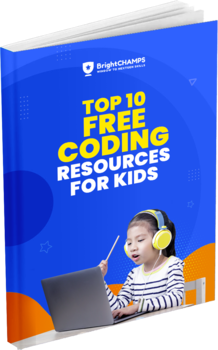STEM education, which focuses on science, technology, engineering, and math, aims to help the next generation get good jobs. STEM education teaches skills that go beyond those needed to succeed in STEM fields. This means that young people with a wide range of interests can go into any business and do well because they have useful skill sets. Let’s check out some of the beneficial effects of STEM learning for kids.
- Improves creativity
“Thinking outside the box” is a phrase we’ve all heard before, right? Actually, the core of STEM education is creativity, and fostering creativity often begins with books for kids. When solving hard problems, STEM students are encouraged to come up with their own ideas and use methods from different fields, which is where reading books for kids can be incredibly influential. These books introduce children to new worlds, ideas, and perspectives, igniting their imaginations and nurturing the creativity that lies at the heart of STEM education.
- Enhances team collaborations
Teams are frequently needed in the real world and at work to solve and finish complex challenges. Because of this, STEM education puts a lot of emphasis on working together to reach a common goal. This is done to teach children the value of leadership and communication.
- Develops communication skills
Of all life skills, communication skills are arguably the most crucial, and developing good habits for kids in this area is essential. The key to success in a child’s life as they become older will be having the capacity to communicate complicated ideas to others while also learning from one another. Engaging in group STEM activities not only fosters their cognitive skills but also helps kids learn important social skills, like how to listen actively and keep an open mind, as well as how to give and take constructive criticism.
- Enhances critical thinking
STEM education focuses on giving kids information that will help them think more critically and develop essential critical thinking skills for kids. The act of actively conceiving, applying, analyzing, and evaluating information by means of observation, experience, reflection, reasoning, or communication is known as critical thinking. So, teachers will encourage students to answer questions and solve problems by getting actively involved with the content, fostering their critical thinking skills for kids.
This approach will not only help students understand the problem but also empower them to find logical solutions. Situations like these, early in their education, will better prepare students for their futures because they will better mirror what is expected of them in the industry, where critical thinking skills for kids are highly valued
- Develops curiosity
The whole point of STEM is to encourage youngsters to ask “why” and “how” questions. Students will get the chance to use STEM to explore their ideas and develop creative solutions. Students who are interested in their classes and want to learn are the ones who lead to new ideas and discoveries.
- Enhances cognitive skills
The mental abilities known as “cognitive talents” improve reading, thinking, and learning. It may be worked out and strengthened through training, much like a muscle. When kids engage in reading for kids, such as exploring books that pique their curiosity and imagination, they not only enhance their reading skills but also develop critical thinking abilities.
Additionally, when children take STEM classes in elementary school, they can improve their thinking skills and learn how to code and build things, further boosting their cognitive talents. This integrated approach will help kids improve their cognitive skills, which will in turn assist them in figuring out how to solve problems faster and better.
- Introducing kids to STEM education at an early age
Studies show that most jobs will be focused on STEM fields or have some STEM elements. Early exposure to STEM, including activities like coding for kids, opens kids’ eyes to a world of possibilities and gives them the skills they need to be successful in the 21st century. Coding for kids, in particular, equips them with the computational thinking and problem-solving abilities essential for navigating the technology-driven world of tomorrow.
- Helps kids to take initiative
Learning is becoming more enjoyable as a process, especially when it comes to early childhood learning. Inquisitive students with the ability to approach problems with confidence often start their educational journey with a strong foundation. Early childhood learning not only helps students have a more positive view of learning but also boosts their self-confidence and gets rid of negative biases. This early exposure to educational experiences sets the stage for their future development, helping them grow into individuals who are curious, sure of themselves, and willing to solve problems on their own.
- Enhances media literacy
In contrast to other areas, STEM students learn via investigation and research, and encouraging questions for kids is an integral part of this process. Students must take part in inquiry-based learning by coming up with their own main questions and looking for answers
through reading and research. They can use what they have learnt in this way to improve their daily lives.
- Boosts social-emotional learning (SEL)
Happiness and success in life are a result of social and emotional intelligence. Before they become active members of society, young people are encouraged to learn STEM to improve their SEL skills. Integrating SEL practices into lessons not only helps students grow as people but also helps them learn more in school.
Conclusion
According to some research, technology, and STEM fields will dominate society in the future. Early STEM education helps kids get used to a world that is technologically advanced and full of opportunities. Better innovators who can branch out into many industries as adults are produced thanks in part to STEM education. Some of the most important benefits of STEM education and how it helps kids’ minds grow are listed above. To learn more about STEM education for kids, check out the latest blogs on the BrightCHAMPS blog page.


 We are an army of educators and passionate learners from BrightChamps family, committed to providing free learning resources to kids, parents & students.
We are an army of educators and passionate learners from BrightChamps family, committed to providing free learning resources to kids, parents & students.














